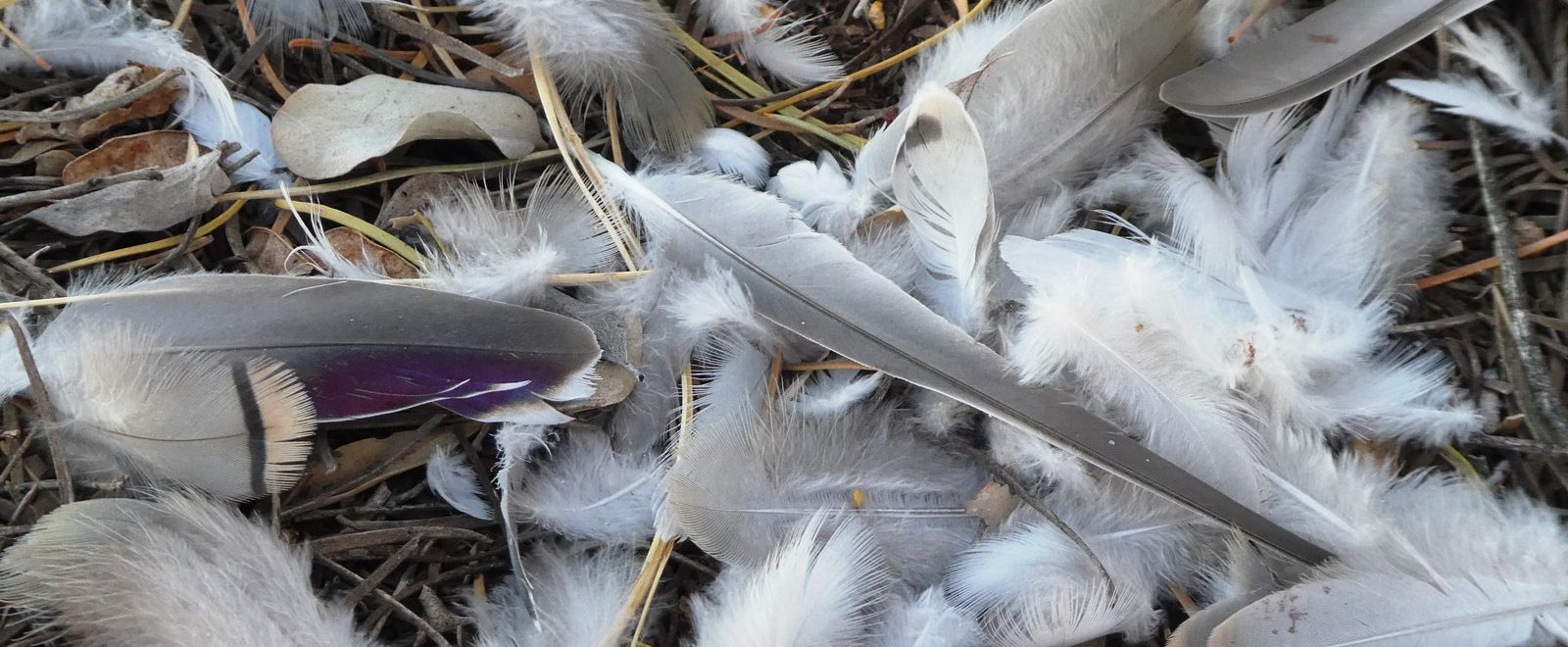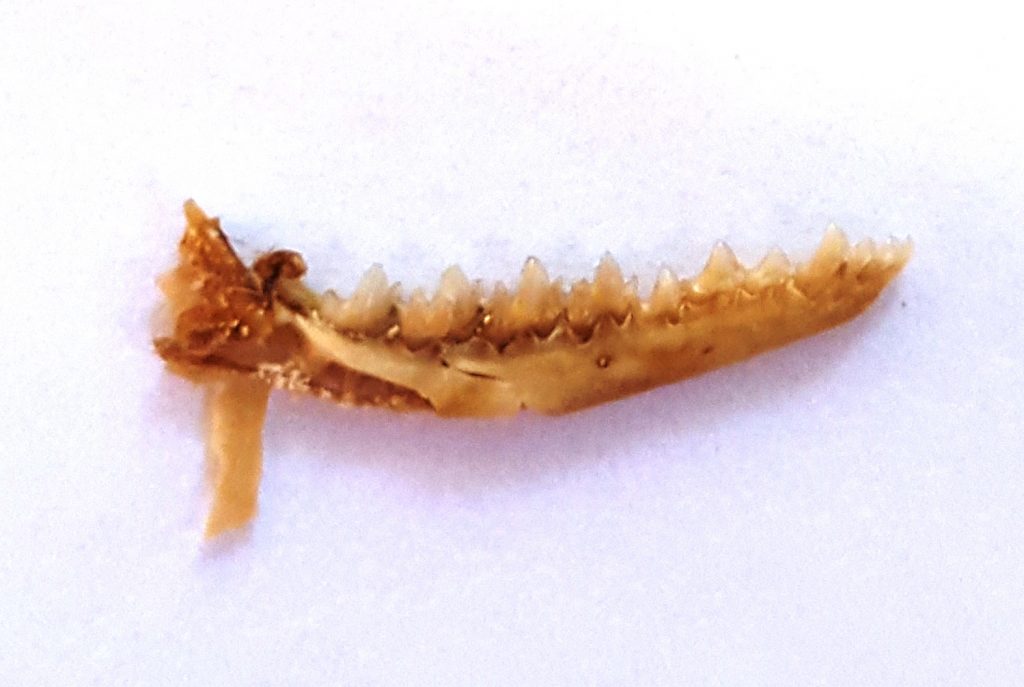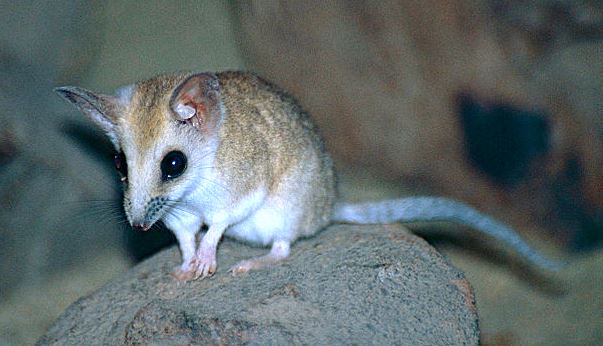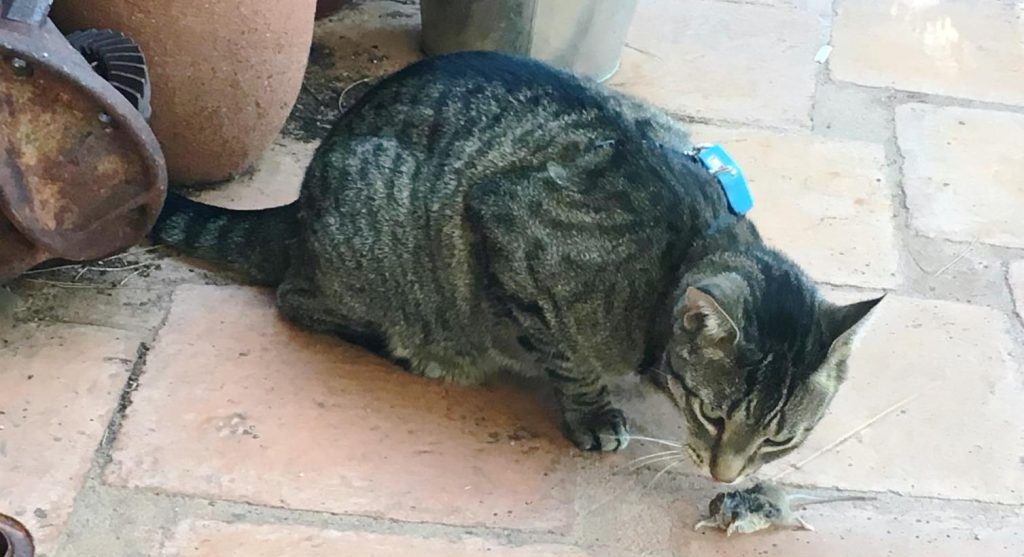Cat Scat Analysis

To assist us in understanding the activities of cats that are roaming outside, we aimed to analyse scats for foreign food items. Food items we were on the lookout for included components of birds, rodents, reptiles and insects. Processed commercial food was expected to break down, while other animals consumed would likely leave portions of bone, scale or fur, which could then be identified.
A total of five scats were collected during the program, with contents including insect material, Red Kangaroo (Macropus rufus) and Fat-tailed Dunnart (Sminthopsis crassicaudata). The mammal contents were confirmed via hair samples contained in the scats, as well as a fragment of lower mandible.
The findings are surprising, given that there is very little knowledge regarding the habitat preferences of S. crassicaudata close to urban areas. While relatives in the Dasyurid family are known to enter houses elsewhere in Australia, the presence of Dunnarts in town blocks of Alice Springs is great news. This native animal is commonly found in grass, shrub or woodland in native habitat surrounding Alice Springs. The species is listed as ‘Least Concern’ and is therefore not threatened, despite many other native mammals becoming threatened by introduced predators, such as feral cats. The same species was detected in two domestic cats, each living on opposite sides of Alice Springs. While one of the cats is known to travel through river beds and neighbouring bushland, the other didn’t leave the near vicinity of the house. This indicates that the Dunnart is capable of residing on, or travelling through, suburban town blocks. This native mammal is able to survive in extreme semi-arid environments by feeding at night (it has a nocturnal habit), employing daily torpor to reduce energy expenditure in cold weather, and sharing nests with rodent species to conserve heat.
The finding that a scat contained remains of M. rufus is not as surprising, given that kangaroos can be found more commonly on the outskirts of Alice Springs. Kangaroo tail is also often brought into town by Indigenous community members returning from hunting trips. The skin and small meat remains of this species can often be found near fire pits following such visits to town. Kangaroos living on the outskirts of town may also succumb to demise through other means, before being fed on by roaming cats. Commercial cat food in the fridge section of the supermarket can also contain kangaroo meat, and there is the potential that hair remains are present in this cat food source. Therefore the source of the kangaroo in the faecal matter of a domestic cat cannot be ascertained and further monitoring would be necessary (perhaps via further video surveillance of the cat in question).
Several cat owners also confessed the wildlife consumed by their pet cats, which included various reptiles, birds and house mice. The scats obtained during the monitoring period did not contain remnants of reptile or bird, which was surprising given the predominance of such wildlife in the monitoring area.
This project is supported by Territory Natural Resource Management, through funding from the Australian Government’s National Landcare Programme.




